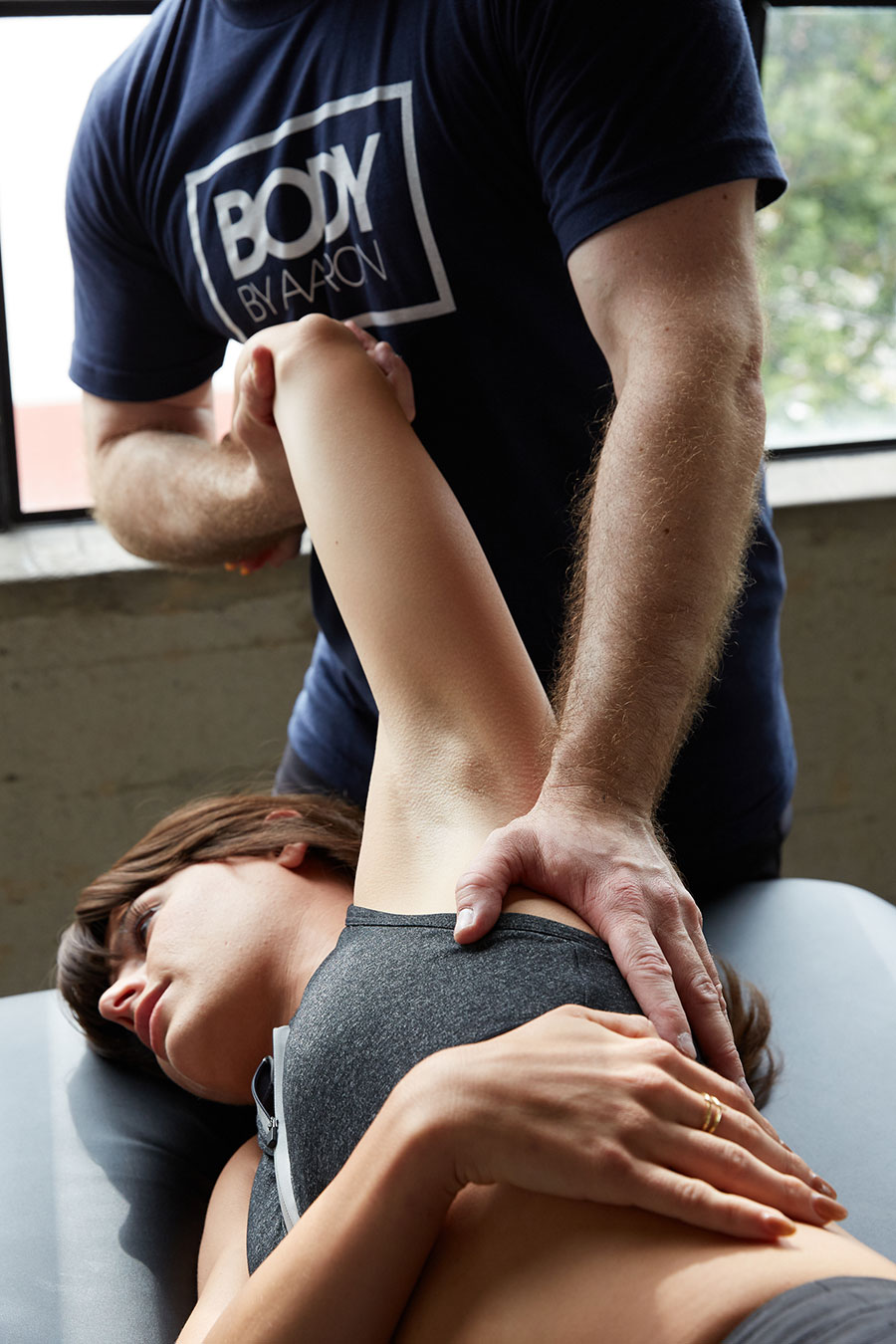Fascial Stretch Therapy™ vs. Traditional Assisted Stretching
I get asked about the differences between Fascial Stretch Therapy™ and Traditional Assisted Stretching frequently. For the most part, my answer has always been, “get on my table.” Once I get someone on my table, they almost certainly become a client of mine. I have the ability to really feel what my clients require by assessing their individual body’s needs. With Fascial Stretch Therapy™, I am able to precisely stretch the points that enable better movement and mobility and create change in my clients’ tissues without pain or discomfort.
Because of COVID-19 related lockdowns, I have been forced to spend more time discussing these differences with clients over the phone instead of my usual in-person consultations. My hope is that this blog will help curious clients such as yourself understand the differences between Fascial Stretch Therapy™ and Traditional Assisted Stretching and why Fascial Stretch Therapy™ is the ultimate go-to.
Let’s start with the basics – What is Fascial Stretch Therapy™?
Fascial Stretch Therapy™ (FST) is an assisted stretching technique that uses a systemic approach to increase range of motion, facilitate better movement patterns, and improve posture and performance in clients.
FST practitioners focus on stretching the joint capsule and deeper muscles that are close to the joint capsule before addressing superficial muscles. This tactic is one that clients feel in real-time. As such, one of the first skills my clients develop while lying on the table during their first session is the ability to let go.
Most of all, every stretch and movement I take with my clients is a chance to assess where they are presently at. I can sense if my client trusts me, feel the tension they are carrying in their joints and other musculature, and reevaluate and redirect my approach in order to make the best and biggest difference for my client. There is an intuitive element to FST that offers deeply personalized treatments and client-tailored well thought out plan of care.
What are the Differences Between Traditional Assisted Stretching and Fascial Stretch Therapy™?

1. FST offers a personalized approach.
It is perhaps one of the simplest life lessons we can learn: If there is anything you want to improve, you better have (or create) a system for doing so. If we don’t have a system, we are just listlessly grasping at straws and hoping something sticks. Consider practices like Traditional Assisted Stretching the latter. Unlike FST, Traditional Assisted Stretching lacks a true system for personalized improvement.
I have gone to a few massage chain locations and gyms to firsthand experience what they bring to the table (pun intended!). I was moved through a series of standard stretches, a sign that the practitioner was only doing what they had been taught. As a former dancer, I would call this, “mindless choreography” absent of any deeper intention. In typical LA-Valley fashion, I would really just call it “basic.”
The Urban Dictionary defines basic as, “used to describe someone or something devoid of defining characteristics that might make a person or thing interesting, extraordinary, or just simply worth devoting attention to.” Traditional Assisted Stretching lacks the intuitive connection between client and practitioner, and the personalized approach for real, long lasting results.

2. FST practitioners are rigorously trained and have an in-depth understanding of both the muscle-skeletal system and the fascial network. Because of our training, we can provide a body work experience like nothing else.
In order to complete my training for FST, I studied for a full month at The Stretch To Win Institute in Arizona with a total of over 140 hours of professional instruction. On top of that, I have spent a tremendous amount of time studying video tutorials, anatomy, and engaging in countless practice sessions on a wide variety of bodies.
This is all in contrast to one massage franchise offering a 4 hour training session to learn their Assisted Stretching Technique – yes, 4 hours! Not only is this not enough time to truly learn the systems of the body at work during stretching, but it also isn’t even enough time to complete my cherished rib recipe! Even ribs need more than 4 hours to perfect themselves! A 4-hour training session has no way to cover everything a practitioner needs to know for their clients to reap the benefits of a practice like this.

3. Traction, Traction, Traction said in a “Marsha, Marsha, Marsha” cadence. Did I just date myself? Oh well.
Traction is the name of the game and the cornerstone of the success of FST. Traction provides maximum lengthening, offering a more complete and total stretch. My clients instantly recognize the effect from this form of stretching and remark how deep and full it feels.
I have always said that people recognize excellence when they see it. In the case of FST, my clients know excellence with they feel it. Traction is at the very core of what makes FST effective for all bodies, and traction is in every FST stretch. In my experience with Traditional Assisted Stretching, there were no movements grounded by traction – leaving me (and my body) wishing and wanting for more!

4. Fascial Stretch Therapy is extremely relaxing.
Because FST centers its movements around traction, it has a way of instantly down regulating clients. After my very first experience receiving FST, I knew immediately that my clients – with their fast-paced lives and grueling deadlines – would benefit immensely from the choreographed down-regulation approach.
FST also uniquely brings undulating and rhythmic movements to a client’s body. This combination of movements is the secret sauce to the type of down-regulation that enables my clients to enter into a deep meditative state. My absolute favorite thing to tell clients after an FST session is, “you are going to have the best sleep tonight.”
This is all in contrast to Traditional Assisted Stretching, which (rather blindly) takes clients from point A to point B, never fostering that meditative mental shift a client needs to feel relaxed. In some circumstances, clients may even feel on-edge because the practitioner engaging in assisted stretching with them is moving the client in way that may actually feel unsafe. This is largely due to the fact that the practitioner is not trained to feel the tissues and interpret the client’s range of motion. This type of stretching can lead to discomfort and might even put some in a sympathetic mode (fight or flight!). FST offers a trustworthy practitioner who has put in the work and hours to best understand your body’s needs.
The Takeaway
As our lives are completely inundated with the amount of demands we face, it is important we take the time to take care of our bodies. At the end of the day, our health is truly all we have and gives us the vitality to carry on with what we need and want to do. A practice like FST works to reconnect you with your body, boost your athleticism, and increase the relaxation in your life. FST offers highly trained professional practitioners and a personalized approach that is sure to leave you feeling your absolute best.
AND if you still aren’t convinced that Fascial Stretch Therapy™ has an undeniable edge over Traditional Assisted Stretching, I invite you to “get on my table” and allow me to show you what you are missing.
 Aaron Porter, NSCA-CPT®, CMT
Aaron Porter, NSCA-CPT®, CMT
Aaron is a LA based personal trainer and manual therapist whose clients include celebrities, Olympic and professional athletes, and industry professionals. Aaron is also a mobility expert who has worked with artists from Cirque du Soleil to numerous players of the NFL. Aaron is on both the U.S. Open and U.S. Senior Open Golf Championship wellness team.



Leave a Reply
Want to join the discussion?Feel free to contribute!